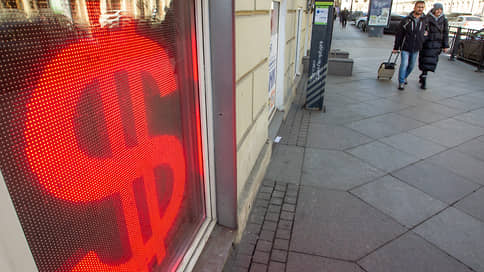The ruble lacks exports – Newspaper Kommersant No. 185 (7386) of 10/06/2022
[ad_1]

The exchange rate of the American currency at exchange trading after a two-week break closed above the level of 60 rubles/$. This was facilitated by a decrease in the supply of foreign currency from exporters, as well as an increase in demand for it from the side of the population amid expectations of a new package of European sanctions. The rise in the exchange rate may continue until the end of the year against the backdrop of a decrease in export earnings incoming to the country and a simultaneous increase in imports.
The morning session on the currency market of the Moscow Exchange began on Wednesday, October 5, with the strengthening of the ruble. At the beginning of the day, the dollar exchange rate fell by 1.54 rubles to 57.41 rubles/$, but before the start of the main session, it went up sharply and returned above the values of the previous day’s close by 10:10 am. At 14:40, the US currency exchange rate reached 60.45 rubles/$, the highest since September 22. As a result of trading, he stopped at around 60.17 rubles / $, having added 1.22 rubles per day. The euro rose by 2 rubles to 58.4 rubles/€ and closed at a two-week high. Trading in the Chinese currency closed at the highs since September 22 – 8.57 rubles / CNY.
The rise in rates took place at low activity of market participants. According to the Moscow Exchange, the volume of transactions with the dollar for delivery “tomorrow” amounted to 59.7 billion rubles, the lowest since the beginning of September and almost twice as low as last week. The volume of trading with the euro remained at the level of the previous week – 55 billion rubles. At the same time, the volume of trading with the Chinese currency reached 58.4 billion rubles. However, for transactions with “today” execution, the volume of trading with the dollar still many times exceeds the turnover with the yuan (46 billion rubles against 10 billion rubles). “Now is the off-season between the September tax period that has ended and the October tax period that has not yet started. This is reflected in the volumes,” says Mikhail Shulgin, head of the global research department at Otkritie Investments.
The rise in rates was facilitated by the news that the European Union agreed the eighth package of sanctions against Russia. New restrictions, in addition to the ceiling on oil prices, will include a ban on imports of steel products, industrial equipment, paper, machinery, chemicals, and plastic.
In addition, it will be prohibited to provide Russian companies with IT, engineering and legal services. According to Dmitry Babin, an expert on the stock market at BCS World of Investments, the imposed sanctions over time increase the negative impact on the economy and the financial sector. The situation is aggravated by the risks of a stronger than previously expected reduction in the volume of export deliveries of Russian oil. “The reduction in exports suggests a potential reduction in the trade surplus, which is reflected in the weakening of the ruble,” notes Mikhail Shulgin.
However, a positive factor for the Russian currency market was the absence of sanctions against the National Clearing Center (NCC). Sanctions against this organization would make it impossible to exchange trade in dollars and euros, and would also lead to a freeze of the currency on the brokerage accounts of Russians. Therefore, in recent weeks, private investors have been actively reducing their positions in dollars and euros. “Since the interruption of trading in currencies has not yet been ruled out, market participants have again begun to buy dollars and euros,” said Vladimir Evstifeev, head of the analytical department at Zenit Bank. But there are no mass purchases on the market, as evidenced by low trading volumes. “Payment risk in dollars remains, and with the next geopolitical aggravation, infrastructure restrictions may be introduced,” notes Mr. Evstifeev.
According to CFO of Expobank Ernst Becker, a gradual weakening of the ruble should be expected on the horizon of the next few months. The main factor will be a possible reduction in the current account surplus.
“The decrease in the surplus will be associated with a likely decrease in export flows against the backdrop of increased volumes in the first three quarters. Alignment of this indicator to last year’s levels may lead to a smooth devaluation of the ruble against the dollar,” notes Mr. Becker. According to Vladimir Evstifeev, by the end of the year the dollar exchange rate may rise to 67–70 rubles/$.
[ad_2]
Source link





